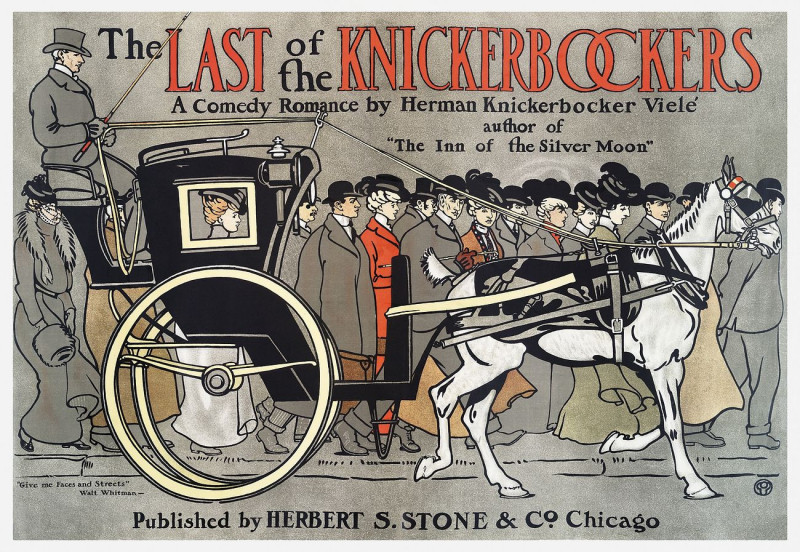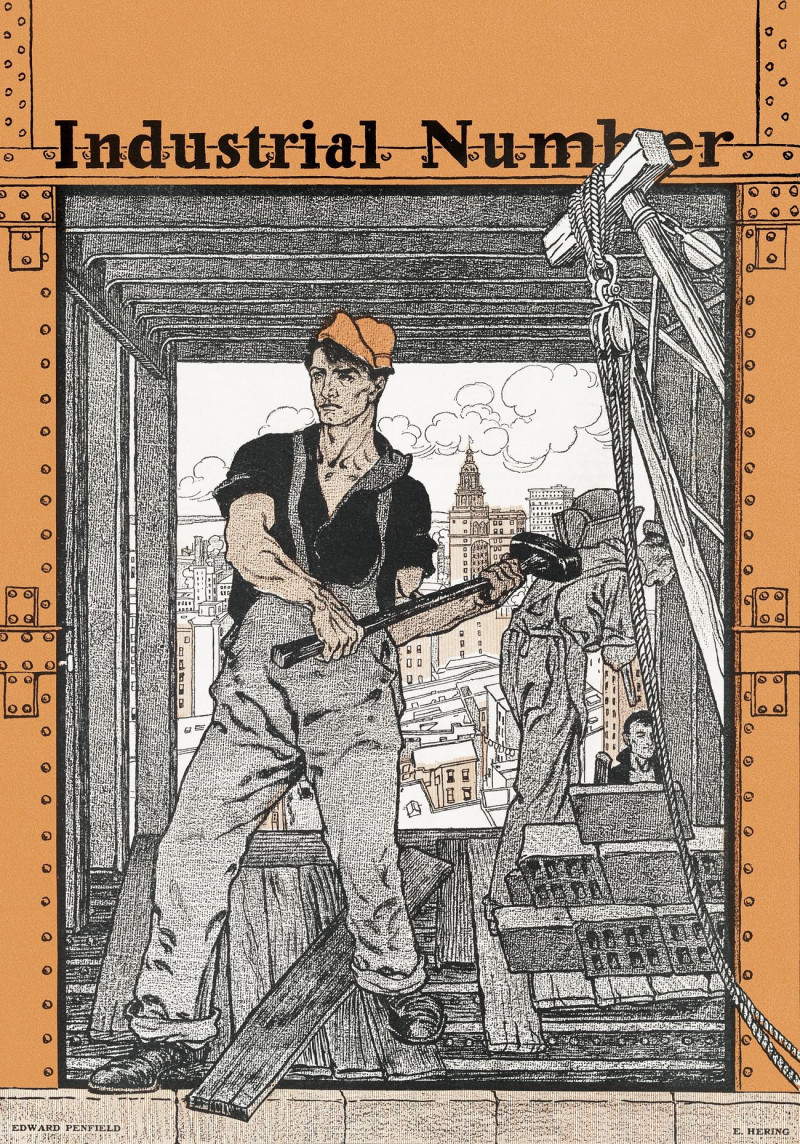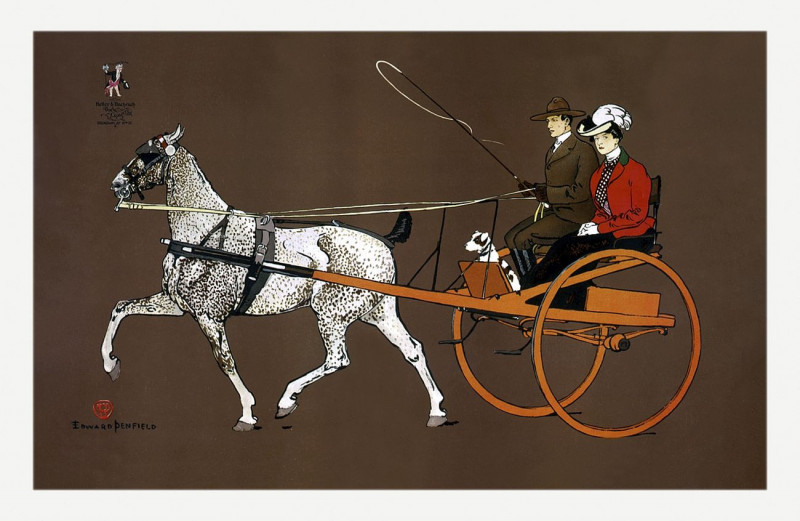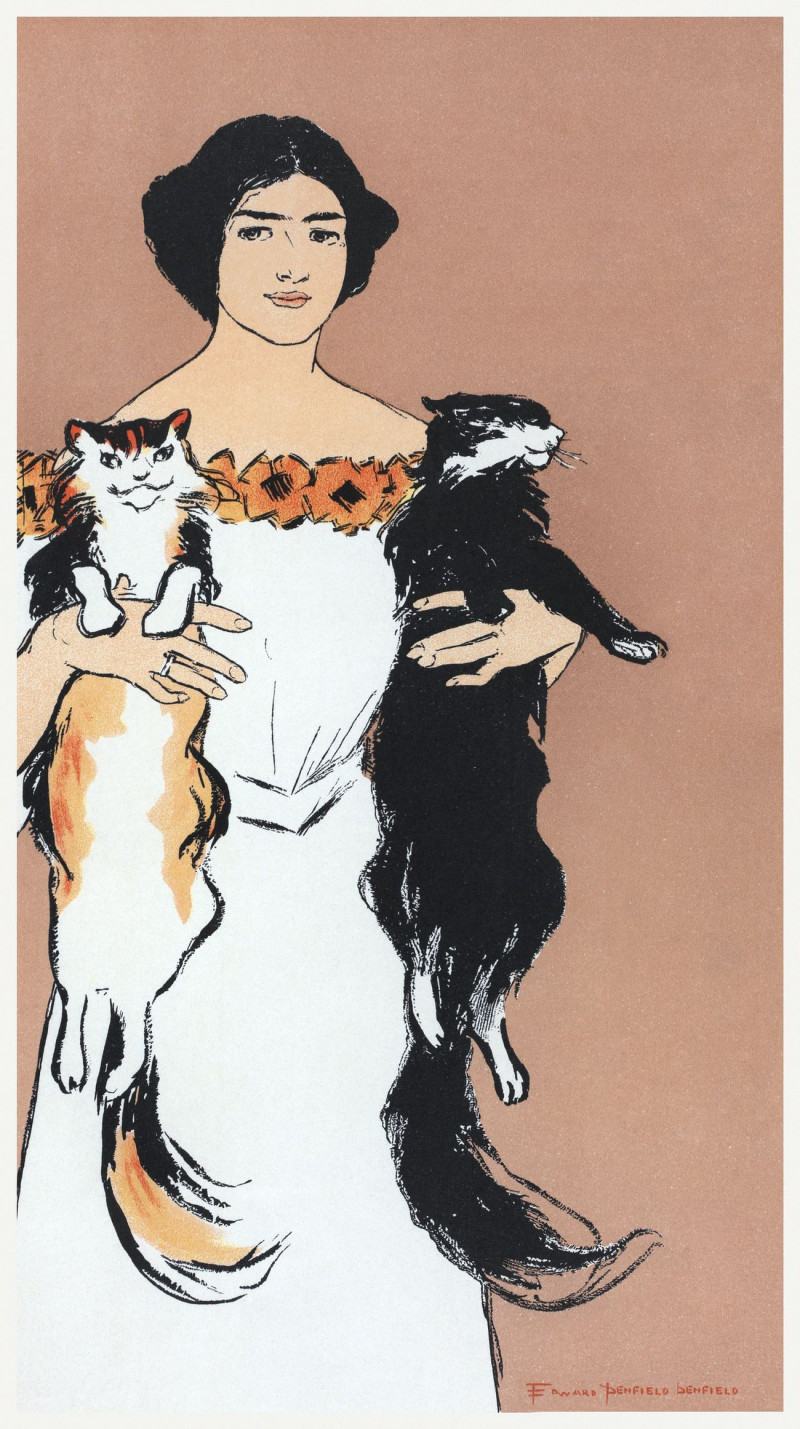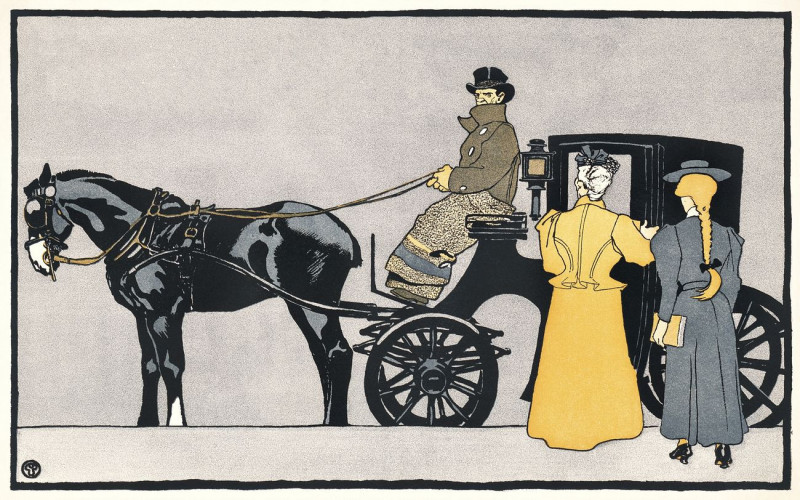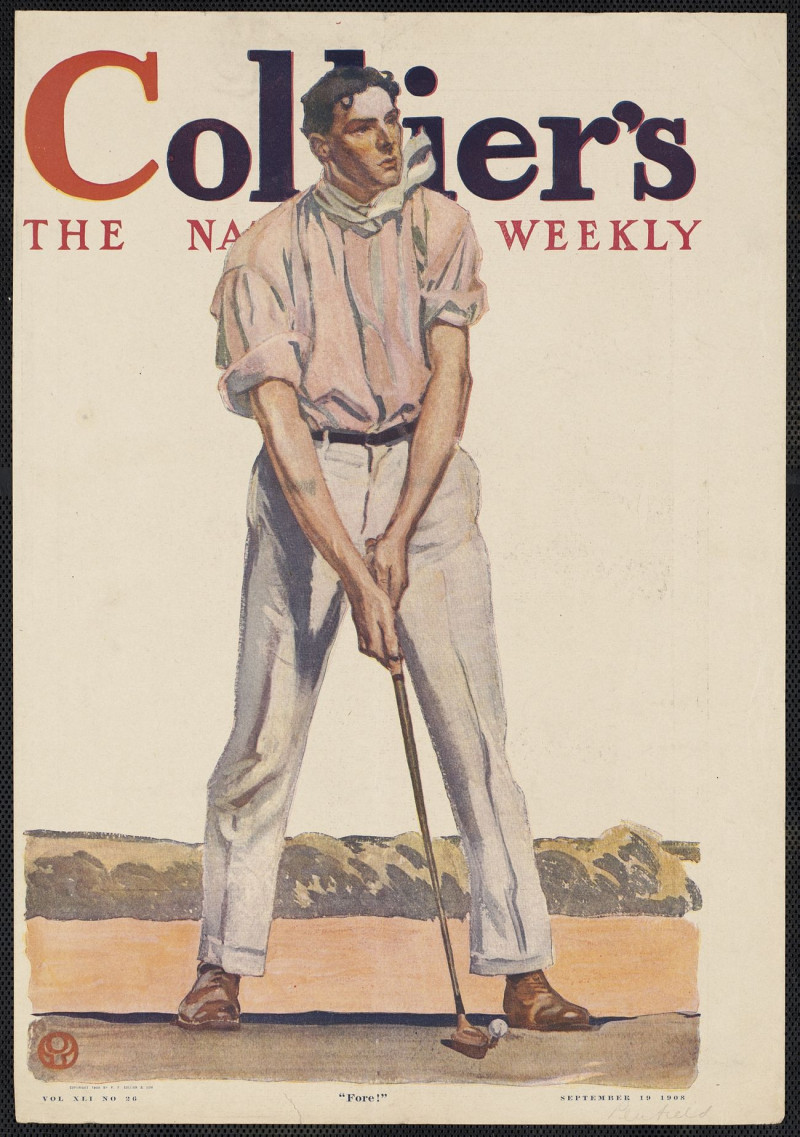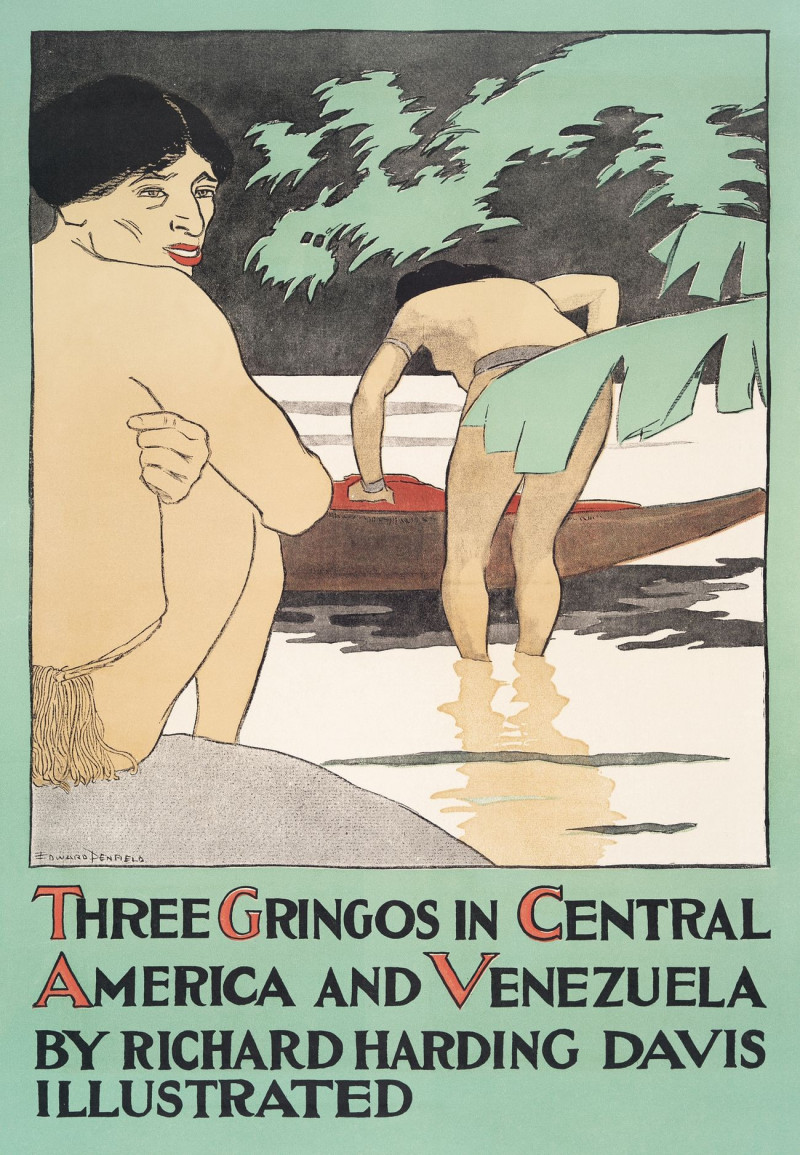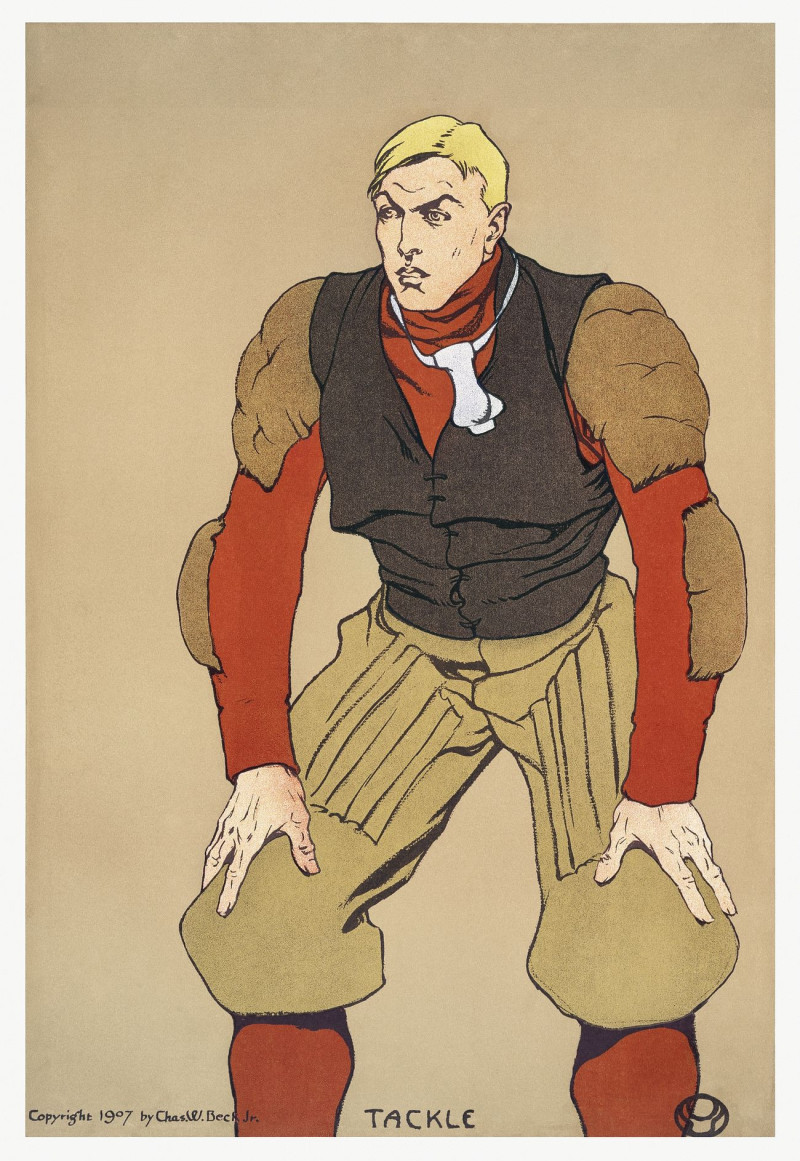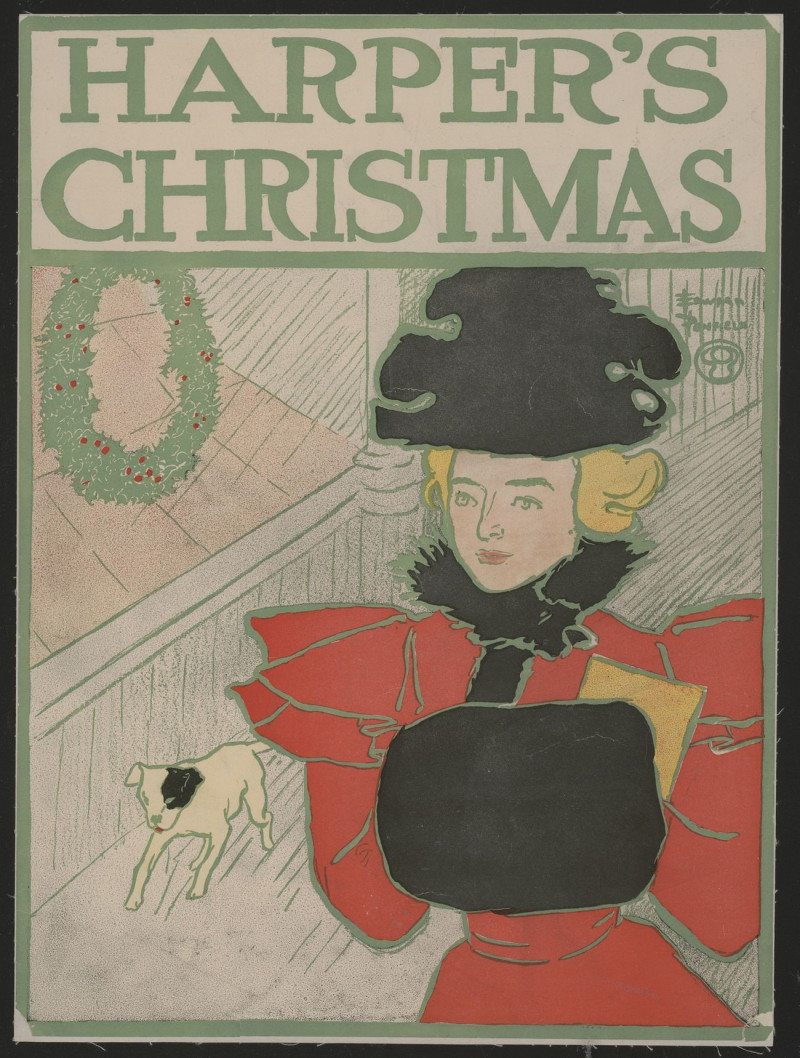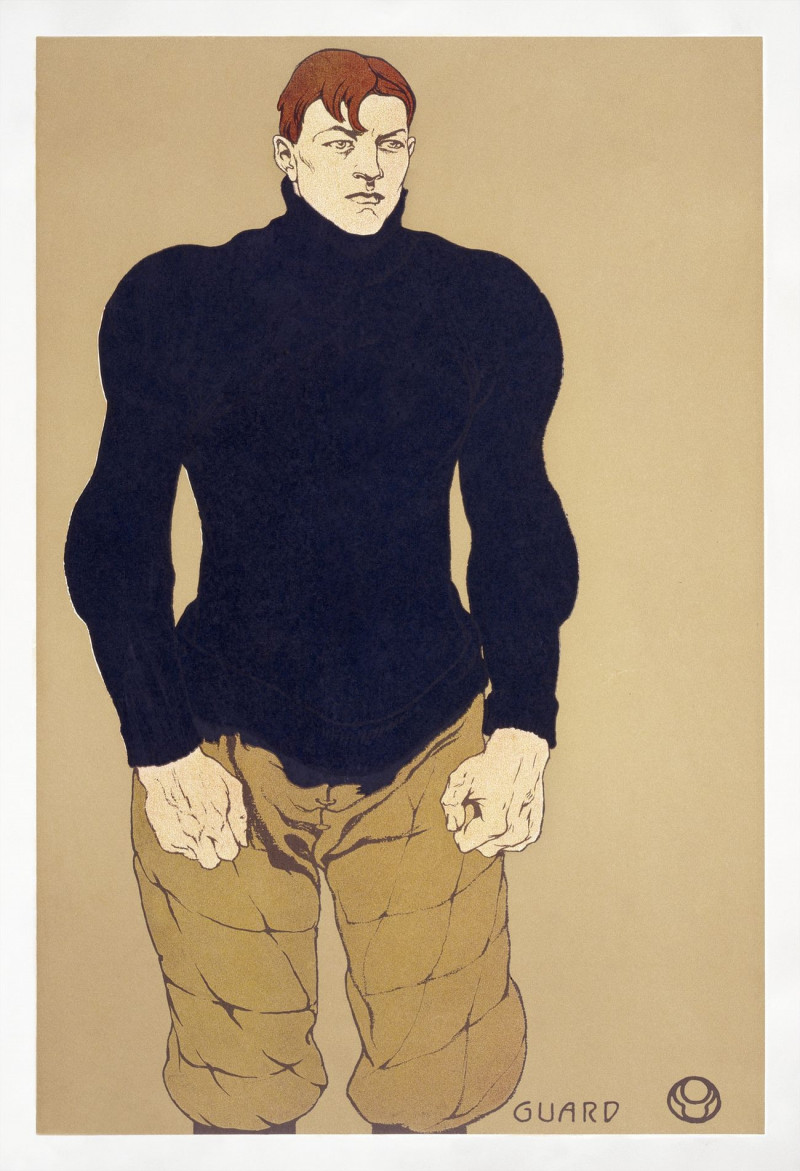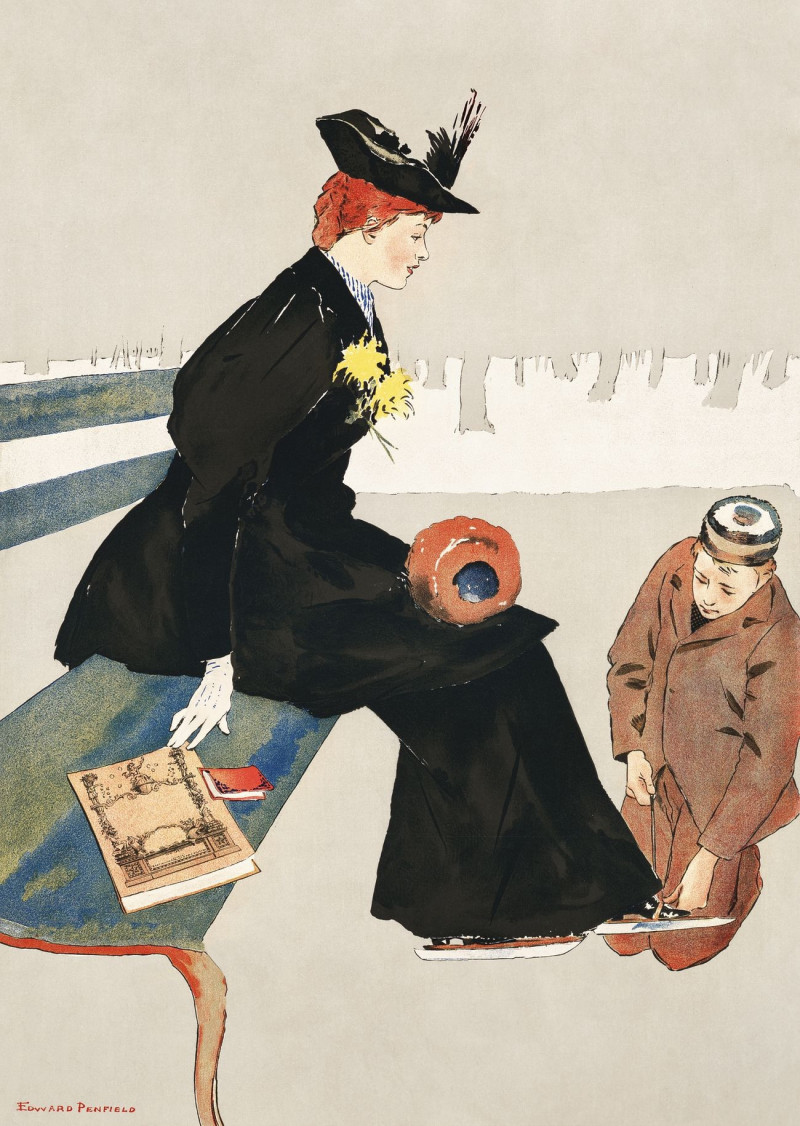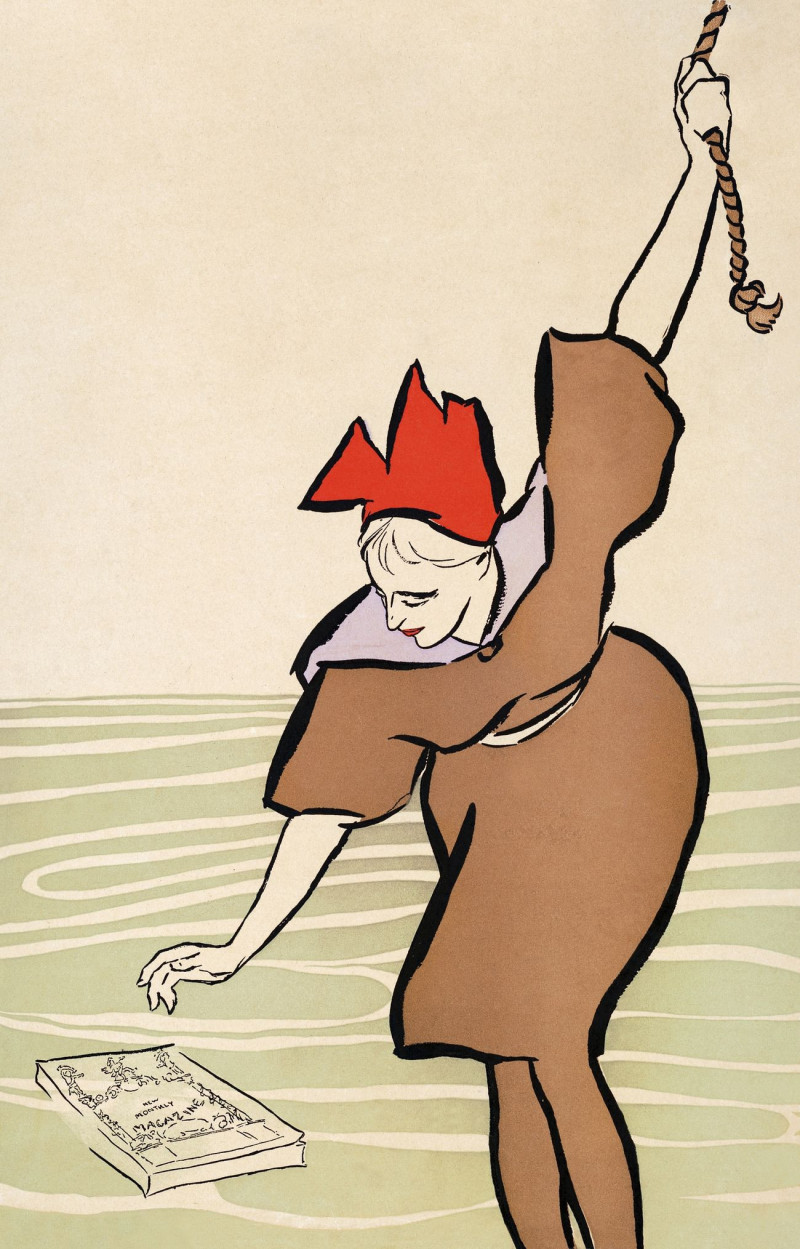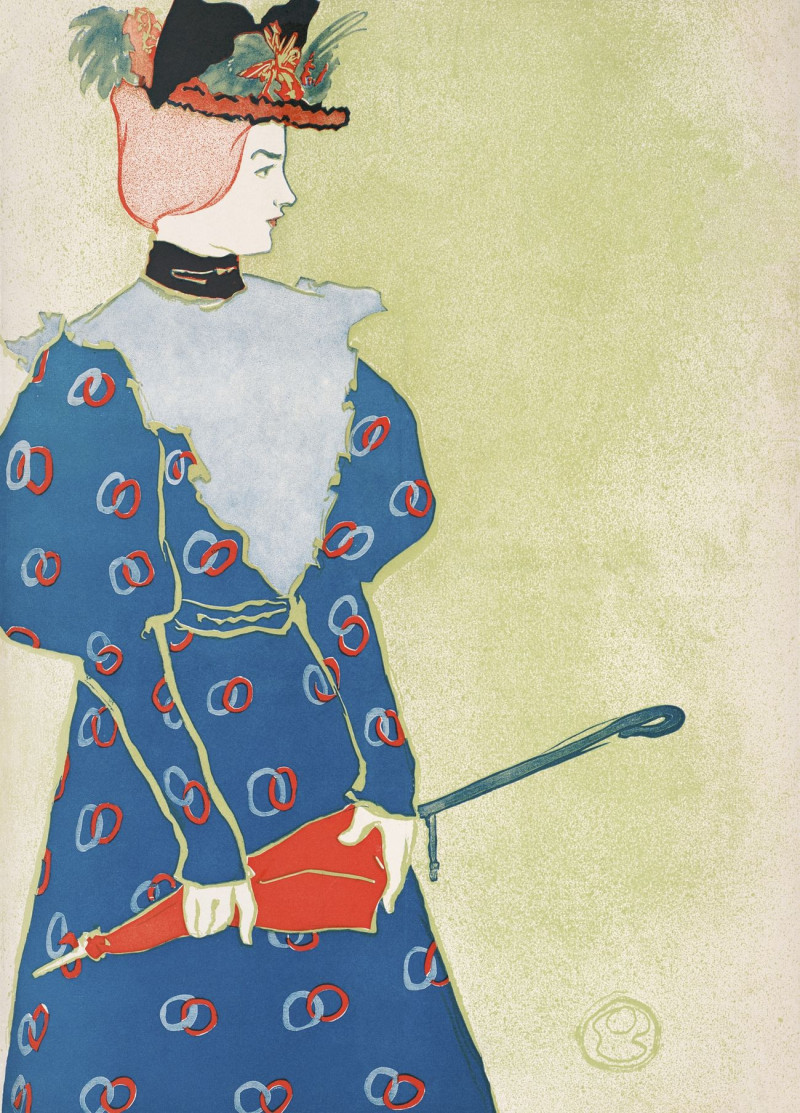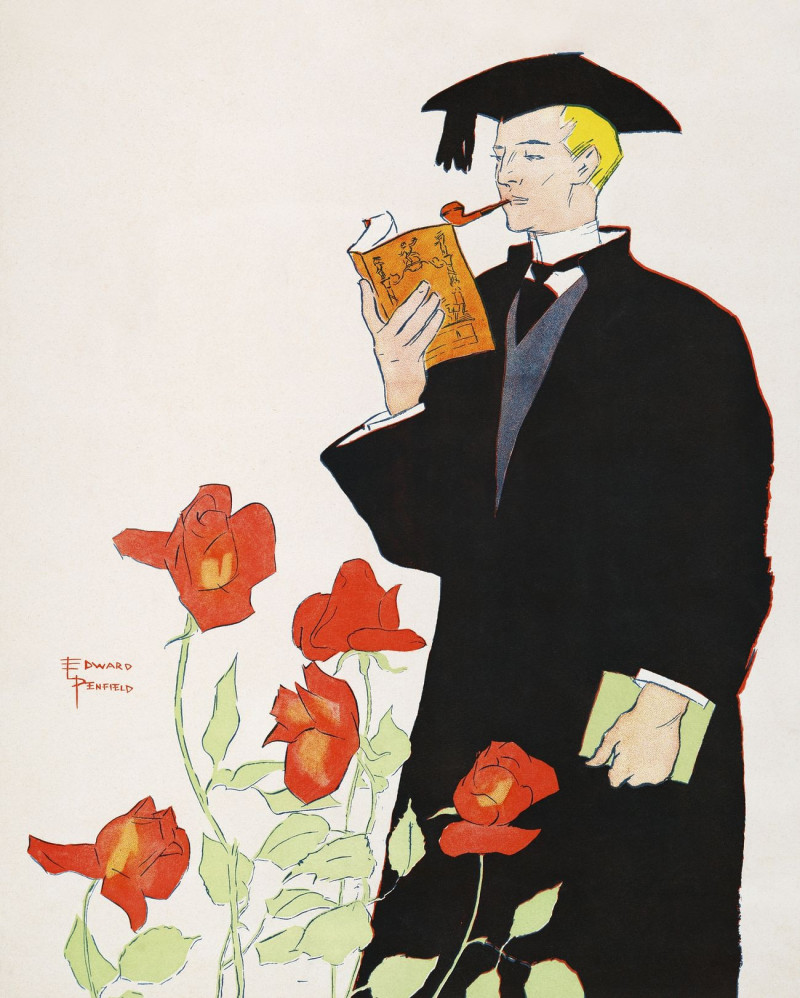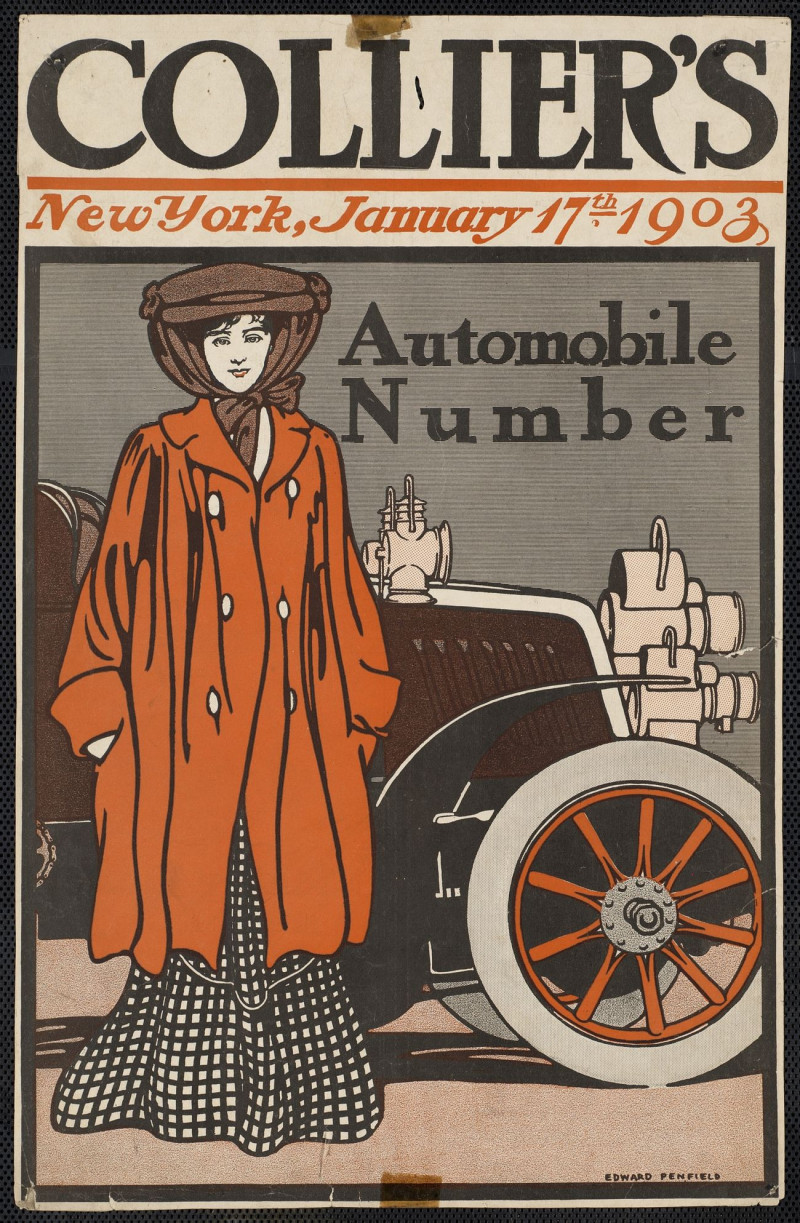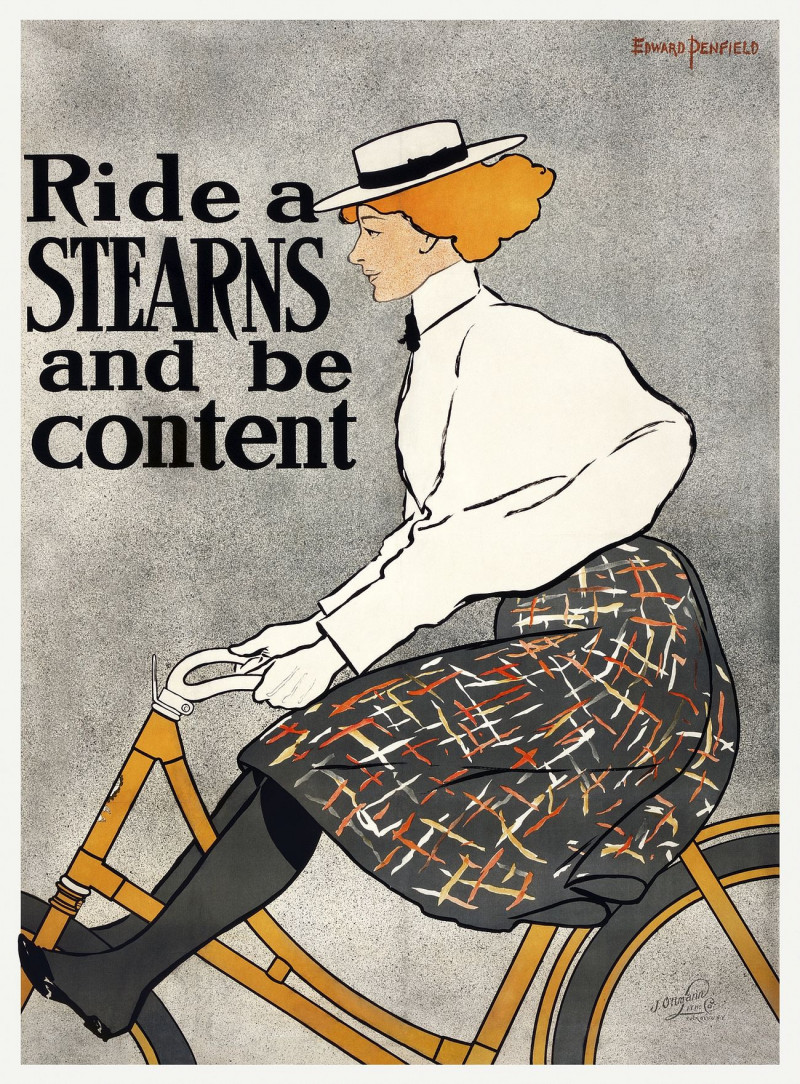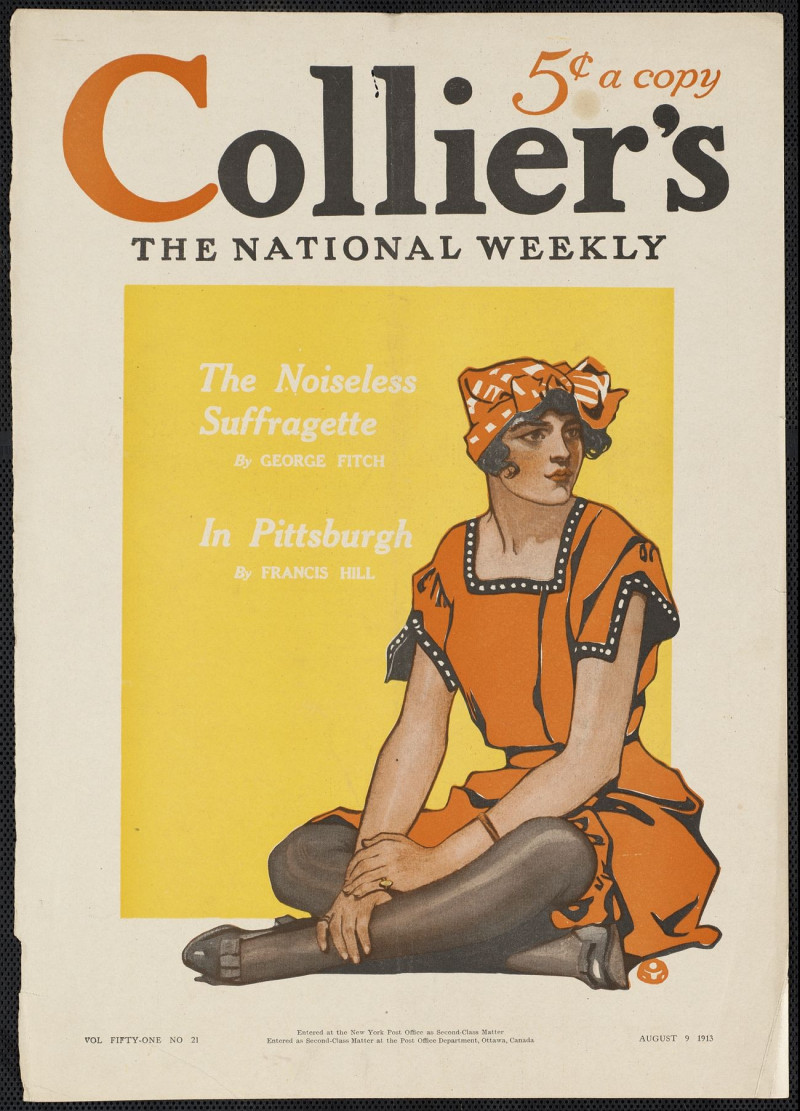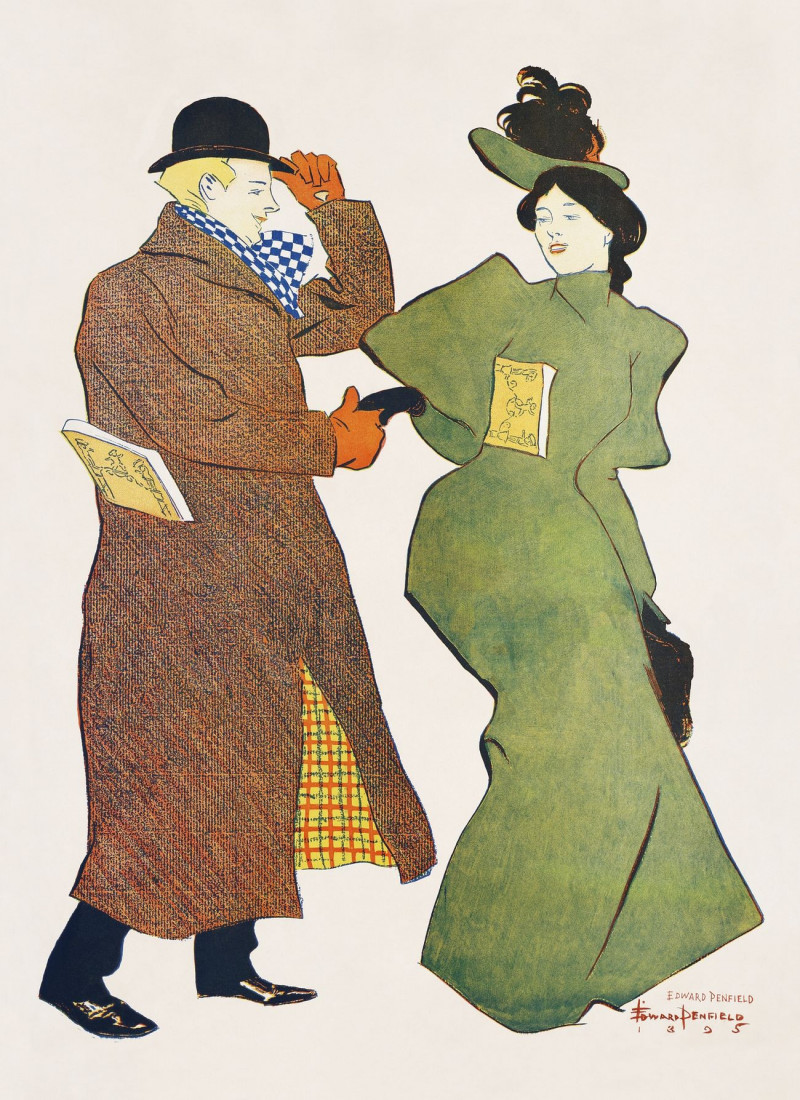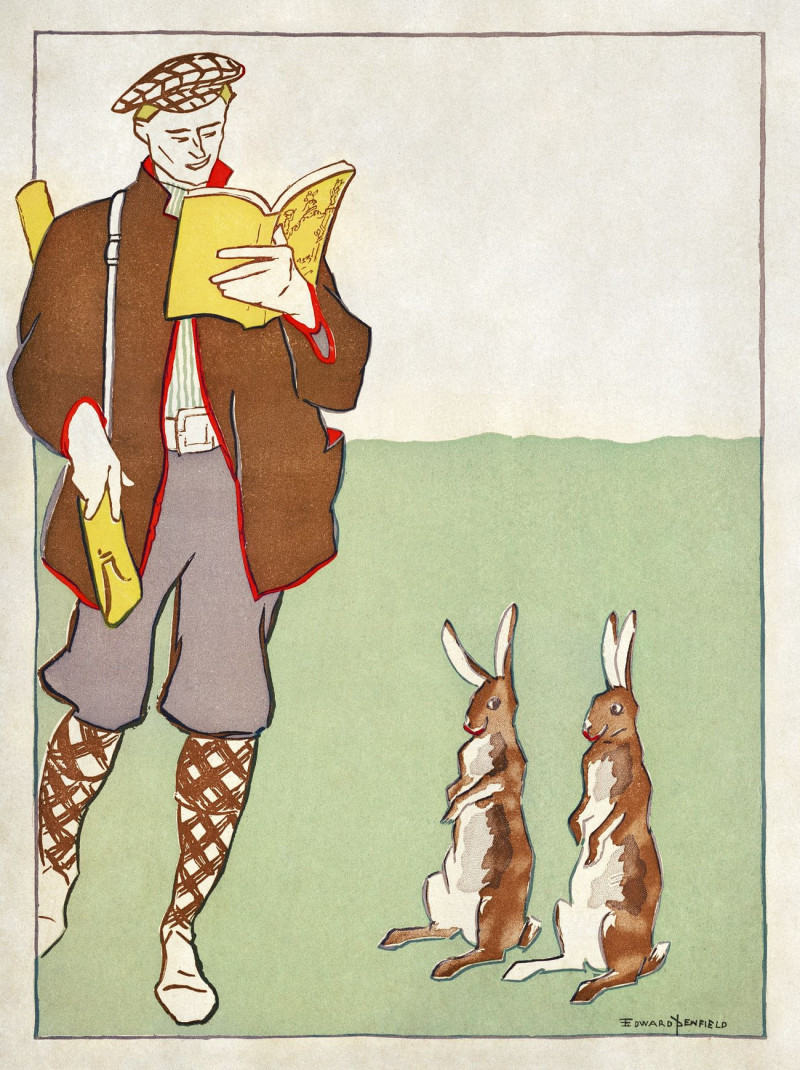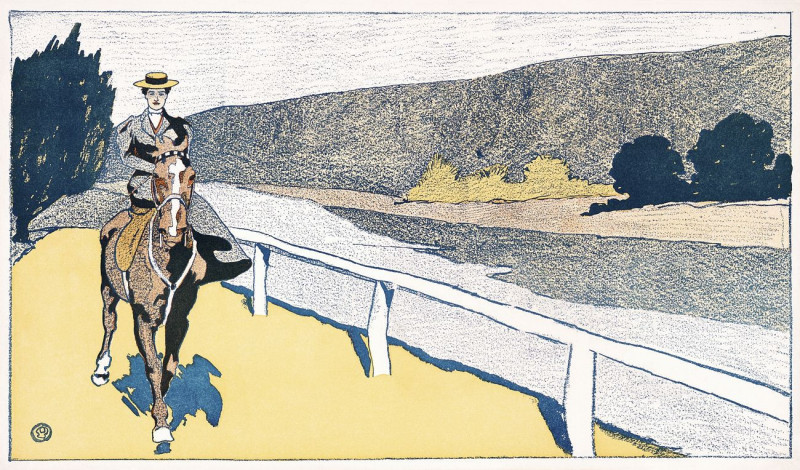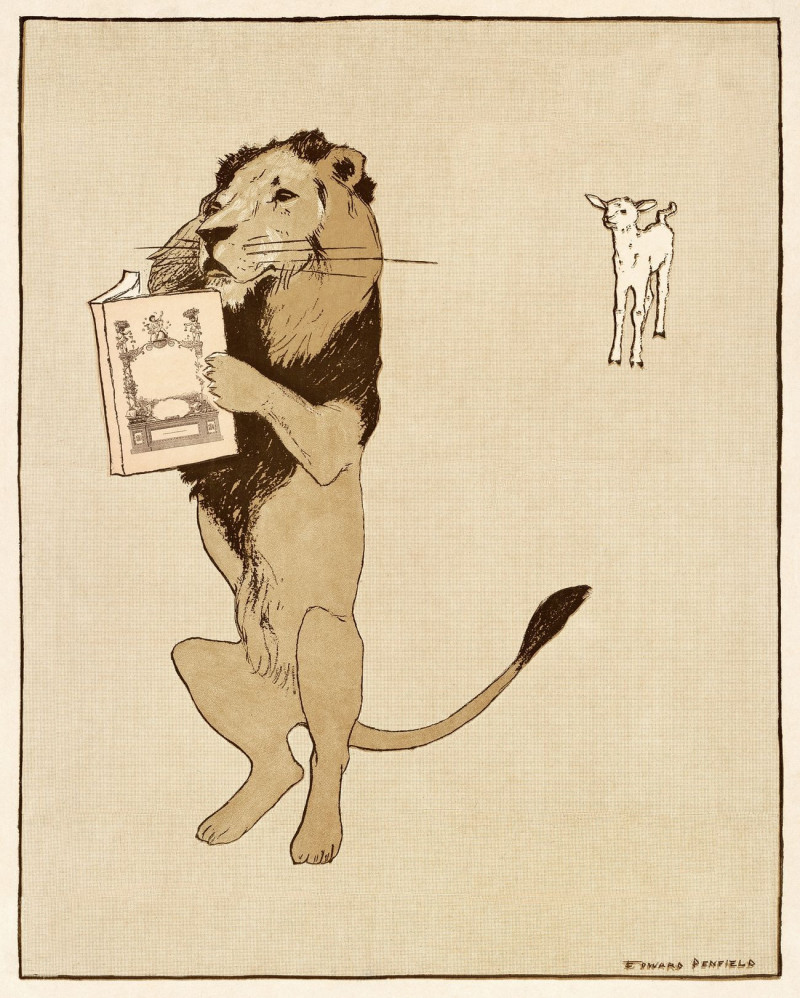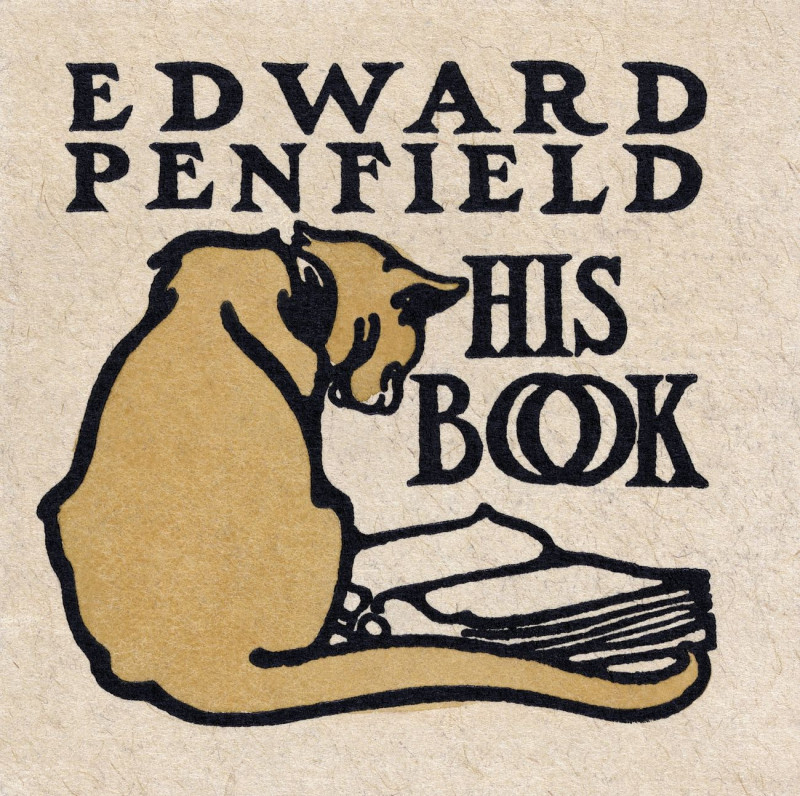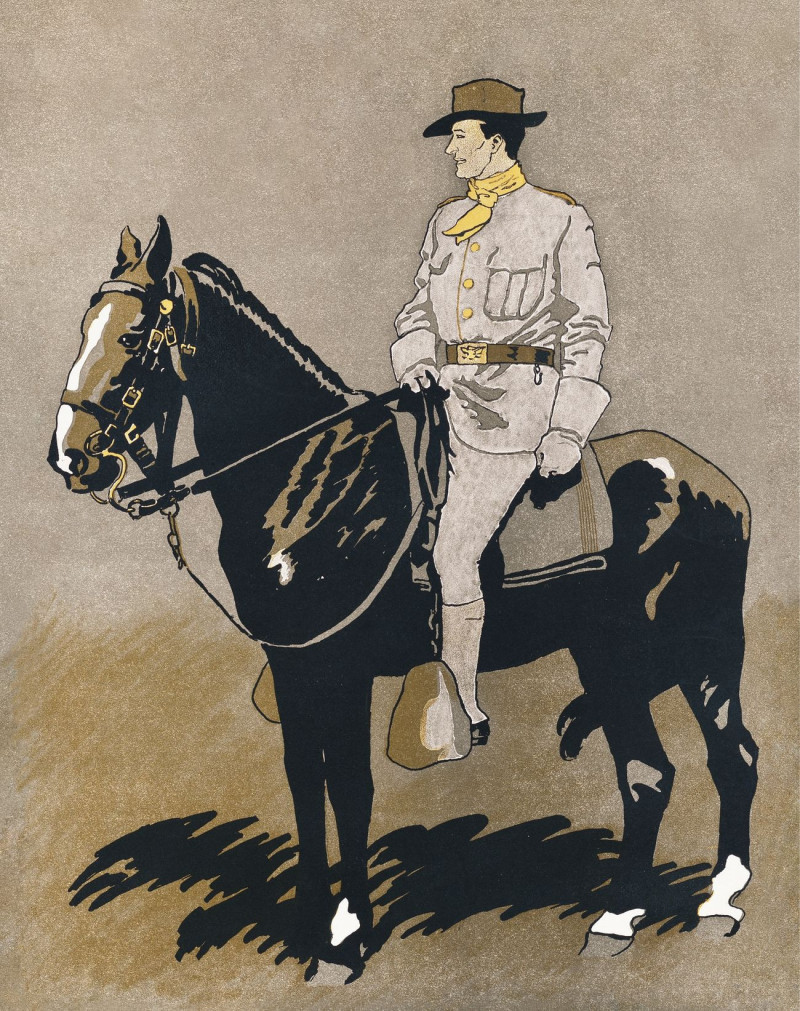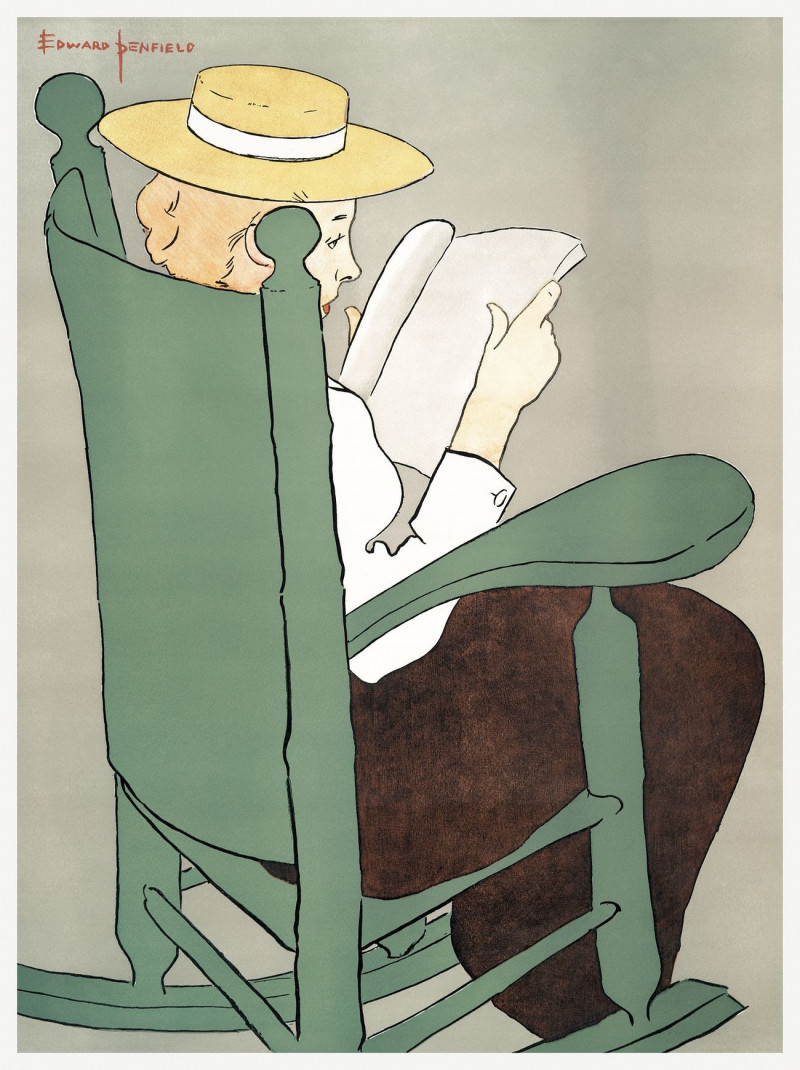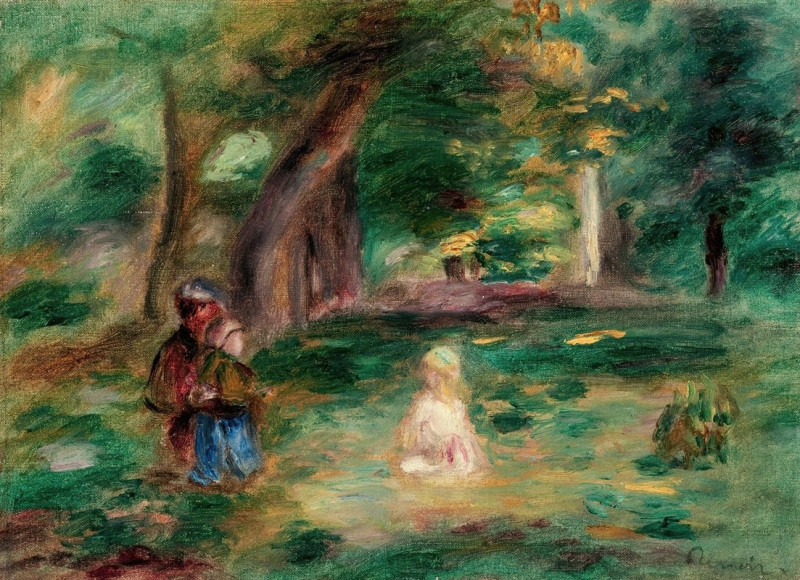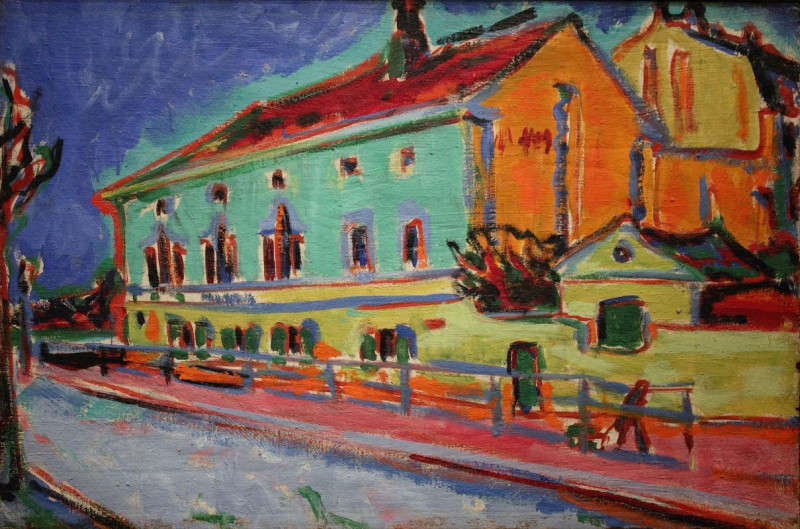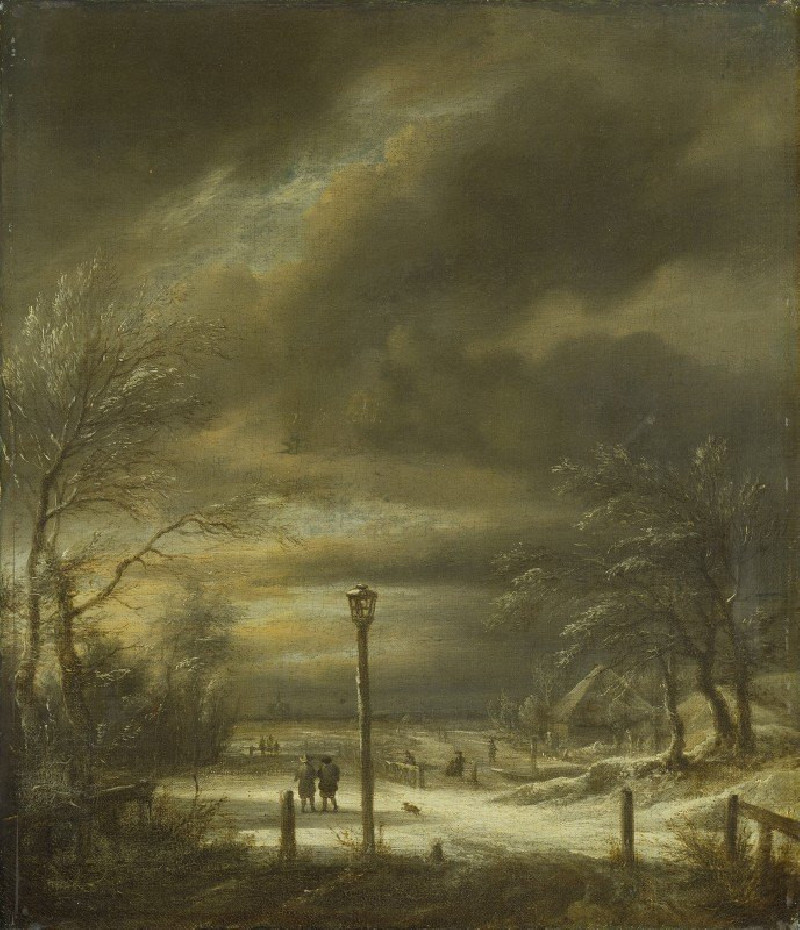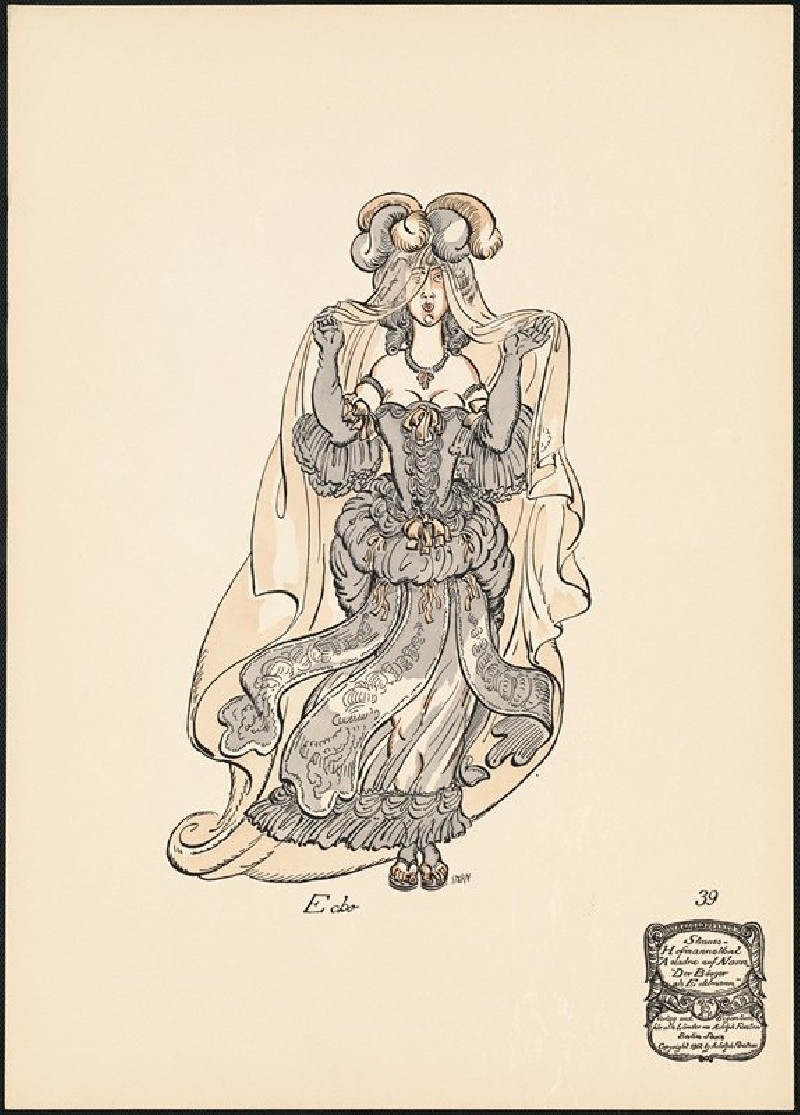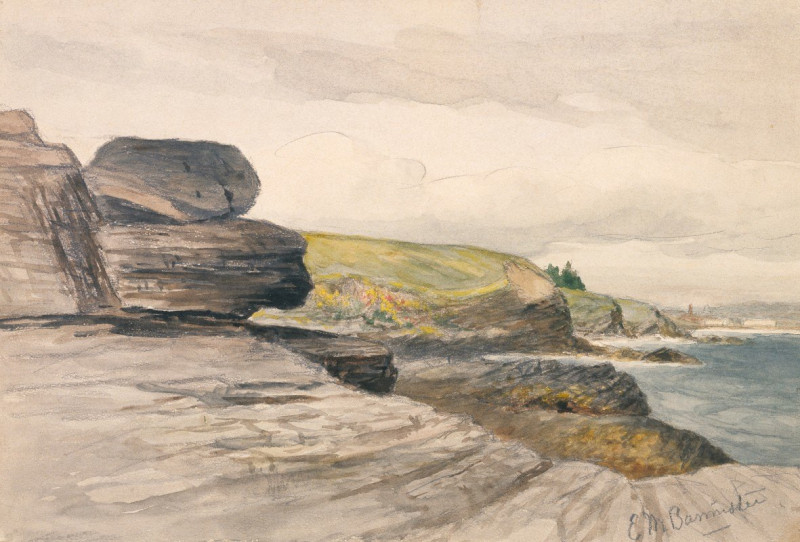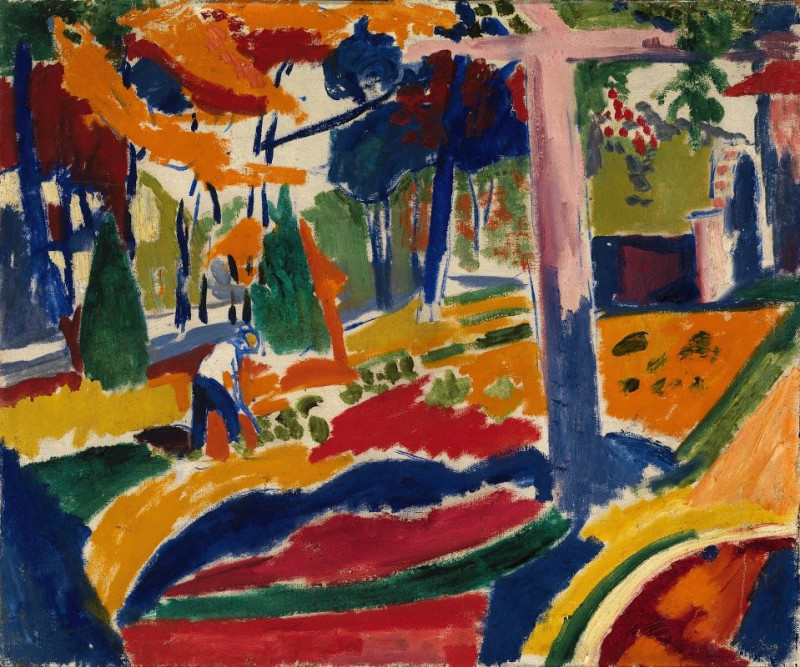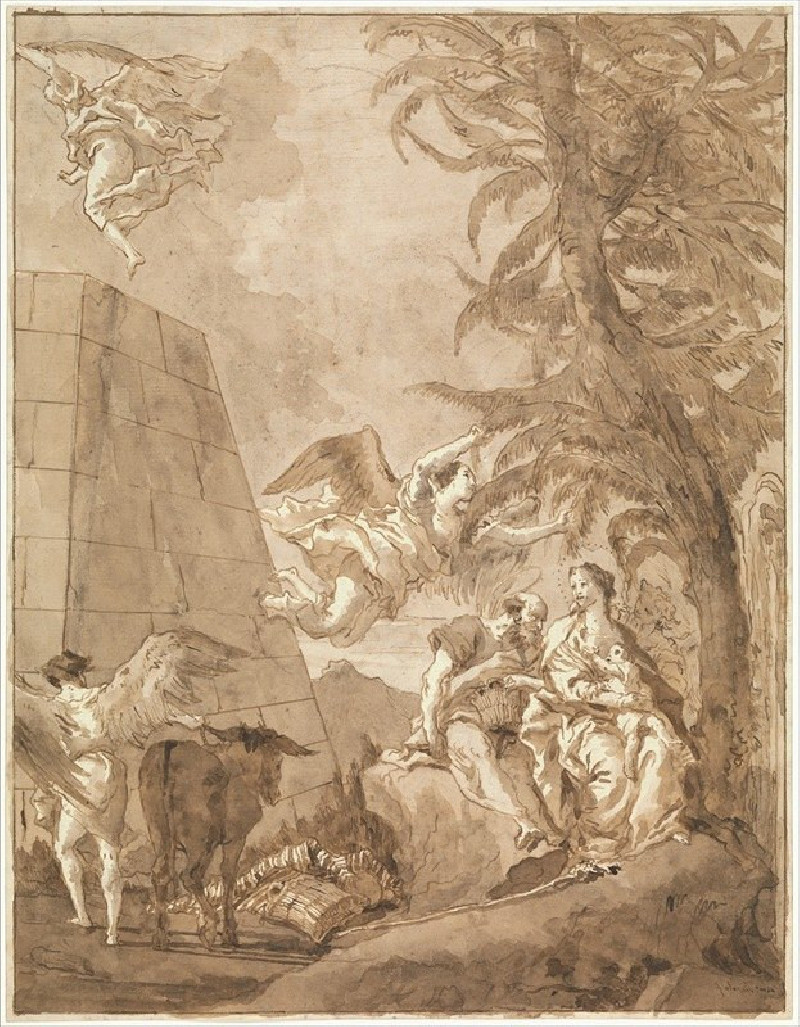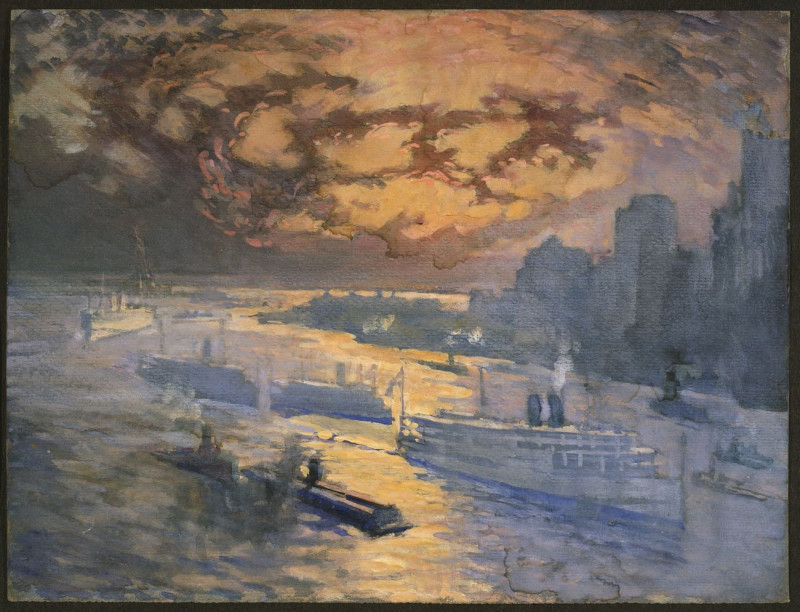The Last Of The Knickerbockers
Technique: Giclée quality print
Recommended by our customers
More about this artwork
This vivid artwork by Edward Penfield, titled "The Last of the Knickerbockers," is created in a stylized graphic design typical of early 20th-century posters. It serves as an advertisement for a book called "The Last of the Knickerbockers: A Comedy Romance" by Herman Knickerbocker Viele, including a reference to another work, “The Inn of the Silver Moon.”The scene is bustling with activity and features a central horse-drawn carriage that grabs the viewer's immediate attention. The coachman confidently holds the reins atop the carriage, which displays a woman peering out of its window, hinting at a story unfolding within. Grouped about the carriage are various figures, likely representing different characters from the book. These characters are dressed in late 19th to early 20th-century attire, suggesting the historical setting of the narrative.Each character is distinctly rendered with enough detail to imply individual personalities, presumably echoing the diverse characters one might encounter in Viele's tale.
Delivery
Returns
Edward Penfield (1866-1925) was an influential American poster artist, considered as the father of the American poster movement. He was employed as an art editor for Harper’s Weekly, Monthly, and Harper’s Bazaar, where he made posters advertising each issue of the magazine for over seven years. His art was avant-garde with less concern for the dramatic curving lines of Art Nouveau, inspired by Japanese ukiyo-e block prints, figure drawings by Henri de Toulouse-Lautrec, color lithographies by Jules Chéret, and other contemporary artists. He created simplified scenes of daily life in saturated colors, including horses, cats, sports, and women’s fashion.

